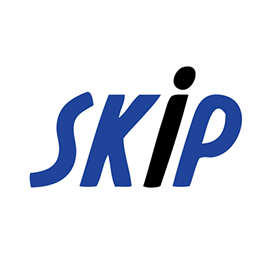米国は日本語出願OK。出願後に英訳が要求される。仮出願では本出願後に英訳を提出すればよい
2010.11.23

SKIP
米国では、出願の言語は全く限定されていません。従って、日本語でも中国語でもなんでも出願OKです。その後、その英訳を提出し、英訳が原文の正確な翻訳であるとの宣誓を提出すればOKです。
仮出願では、原則は英訳は要求されません。その後の米国本出願で、その仮出願に基づく優先権が主張された場合にのみ、英訳の提出が要求されます。従って、仮出願は、とりあえず、日本語の明細書をそのまま提出すればOKです。
608.01 Specification [R-7]
V. FILING OF NON-ENGLISH LANGUAGE APPLICATIONS
37 CFR 1.52 Language, Paper, Writing, Margins, Compact Disc Specifications.
*****
(d) A nonprovisional or provisional application may be in a language other than English.
(1) Nonprovisional application. If a nonprovisional application is filed in a language other than English, an English language translation of the non-English language application, a statement that the translation is accurate, and the processing fee set forth in § 1.17(i) are required. If these items are not filed with the application, applicant will be notified and given a period of time within which they must be filed in order to avoid abandonment.
(2) Provisional application. If a provisional application is filed in a language other than English, an English language translation of the non-English language provisional application will not be required in the provisional application. See § 1.78(a) for the requirements for claiming the benefit of such provisional application in a nonprovisional application.
*****
The U.S. Patent and Trademark Office will accord a filing date to an application meeting the requirements of 35 U.S.C. 111(a), or a provisional application in accordance with 35 U.S.C. 111(b), even though some or all of the application papers, including the written description and the claims, is in a language other than English and hence does not comply with 37 CFR 1.52.
If a nonprovisional application is filed in a language other than English, an English translation of the non-English language papers, a statement that the translation is accurate, the fees set forth in 37 CFR 1.16, the oath or declaration and fee set forth in 37 CFR 1.17(i) should either accompany the nonprovisional application papers or be filed in the Office within the time set by the Office. If a provisional application is filed in a language other than English, an English translation of the non-English language provisional application and a statement that the translation is accurate must be submitted if benefit of the provisional application is claimed in a later-filed nonprovisional application (see 37 CFR 1.78(a)(5)). If the translation and statement were not previously filed in the provisional application, applicant will be notified in the nonprovisional application that claims the benefit of the provisional application and be given a period of time within which to file the translation and statement in the provisional application. Applicants may file the translation and statement in the provisional application even if the provisional application has become abandoned. A timely reply to such notice must include the filing in the nonprovisional application of either a confirmation that the translation and statement were filed in the provisional application, or an amendment or Supplemental Application Data Sheet withdrawing the benefit claim. Failure to take one of the above actions will result in the abandonment of the nonprovisional application.
A subsequently filed English translation must contain the complete identifying data for the application in order to permit prompt association with the papers initially filed. Accordingly, it is strongly recommended that the original application papers be accompanied by a cover letter and a self-addressed return postcard, each containing the following identifying data in English: (a) applicant’s name(s); (b) title of invention; (c) number of pages of specification, claims, and sheets of drawings; (d) whether an oath or declaration was filed and (e) amount and manner of paying the fees set forth in 37 CFR 1.16.
The translation must be a literal translation and must be accompanied by a statement that the translation is accurate. The translation must also be accompanied by a signed request from the applicant, his or her attorney or agent, asking that the English translation be used as the copy for examination purposes in the Office. If the English translation does not conform to idiomatic English and United States practice, it should be accompanied by a preliminary amendment making the necessary changes without the introduction of new matter prohibited by 35 U.S.C. 132. If such an application is published as a patent application publication, the document that is published is the translation. See 37 CFR 1.215(a) and MPEP § 1121 regarding the content of the application publication. In the event that the English translation and the statement are not timely filed in the nonprovisional application, the nonprovisional application will be regarded as abandoned.
It should be recognized that this practice is intended for emergency situations to prevent loss of valuable rights and should not be routinely used for filing applications. There are at least two reasons why this should not be used on a routine basis. First, there are obvious dangers to applicant and the public if he or she fails to obtain a correct literal translation. Second, the filing of a large number of applications under the procedure will create significant administrative burdens on the Office.



